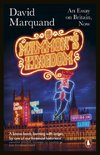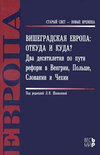
-
 Anglický jazyk
Anglický jazyk
Jack the Ripper
Autor: Source: Wikipedia
Source: Wikipedia. Pages: 112. Chapters: Walter Sickert, Prince Albert Victor, Duke of Clarence and Avondale, Patricia Cornwell, Jack the Ripper suspects, Sir William Gull, 1st Baronet, Whitechapel murders, Montague Druitt, Jack the Ripper: The Final Solution,... Viac o knihe
Na objednávku, dodanie 2-4 týždne
25.56 €
bežná cena: 28.40 €
O knihe
Source: Wikipedia. Pages: 112. Chapters: Walter Sickert, Prince Albert Victor, Duke of Clarence and Avondale, Patricia Cornwell, Jack the Ripper suspects, Sir William Gull, 1st Baronet, Whitechapel murders, Montague Druitt, Jack the Ripper: The Final Solution, William Henry Bury, Frederick Bailey Deeming, Aaron Kosminski, George Bagster Phillips, Walter Dew, Goulston Street graffito, Thomas Neill Cream, James Maybrick, Edward Badham, Robert James Lees, Wynne Edwin Baxter, Thomas Horrocks Openshaw, L. Forbes Winslow, Dorset Street, Thomas Bond, Robert Anderson, Francis Tumblety, Donald Swanson, Frederick Abberline, Richard Mansfield, Theodore Dyke Acland, James Kenneth Stephen, Mary Pearcey, George Chapman, Thomas Arnold, Sir John Williams, 1st Baronet, of the City of London, Robert D'Onston Stephenson, Frederick Porter Wensley, Portrait of a Killer, Joseph Lawende, Dear Boss letter, Thomas E. A. Stowell, Jack the Ripper, Light-Hearted Friend, John Netley, Whitechapel Vigilance Committee, George Godley, George Lusk, From Hell letter, Whitehall Mystery, Israel Schwartz, Saucy Jacky postcard, Roderick Macdonald, Flower and Dean Street, Thomas Vere Bayne, Joseph Silver, Ten Bells, Mitre Square, Liston knife, Walter Simon Andrews, Hanbury Street, Henriques Street, Henry Moore, Durward Street, Casebook: Jack the Ripper. Excerpt: "Jack the Ripper" is the best-known name given to an unidentified serial killer who was active in the largely impoverished areas in and around the Whitechapel district of London in 1888. The name originated in a letter, written by someone claiming to be the murderer, that was disseminated in the media. The letter is widely believed to have been a hoax, and may have been written by a journalist in a deliberate attempt to heighten interest in the story. Other nicknames used for the killer at the time were "The Whitechapel Murderer" and "Leather Apron". Attacks ascribed to the Ripper typically involved female prostitutes from the slums whose throats were cut prior to abdominal mutilations. The removal of internal organs from at least three of the victims led to proposals that their killer possessed anatomical or surgical knowledge. Rumours that the murders were connected intensified in September and October 1888, and letters from a writer or writers purporting to be the murderer were received by media outlets and Scotland Yard. The "From Hell" letter, received by George Lusk of the Whitechapel Vigilance Committee, included half of a preserved human kidney, supposedly from one of the victims. Mainly because of the extraordinarily brutal character of the murders, and because of media treatment of the events, the public came increasingly to believe in a single serial killer known as "Jack the Ripper". Extensive newspaper coverage bestowed widespread and enduring international notoriety on the Ripper. An investigation into a series of brutal killings in Whitechapel up to 1891 was unable to connect all the killings conclusively to the murders of 1888, but the legend of Jack the Ripper solidified. As the murders were never solved, the legends surrounding them became a combination of genuine historical research, folklore, and pseudohistory. The term "ripperology" was coined to describe the study and analysis of the Ripper cases. There are now over one hundred theories about t
- Vydavateľstvo: Books LLC, Reference Series
- Rok vydania: 2016
- Formát: Paperback
- Rozmer: 246 x 189 mm
- Jazyk: Anglický jazyk
- ISBN: 9781157658610





 Nemecký jazyk
Nemecký jazyk 
 Ruský jazyk
Ruský jazyk 




